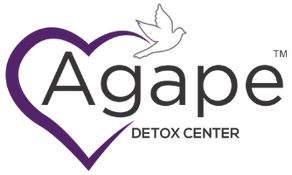The stages of addiction are initial use, experimentation, regular use, risky use, dependence, addiction, and crisis/treatment. Addiction is chronic and a cycle. With proper treatment and self-care, people break the addiction cycle.
Table of Contents
ToggleAddiction is a Cycle
Addiction is one of the most common mental illnesses in the United States, affecting millions of Americans every day. According to the Substance Abuse and Mental Health Services Administration, an estimated 21 million Americans age 12 or older (7.8 percent of the population) required treatment for substance abuse in 2016.
Many factors contribute to addiction, including genetics, environment, and mental health. Addiction is a chronic disease that can cause changes in the brain that lead to compulsive drug seeking and use, even in the face of negative consequences.
As with any cycle, there are stages, but what are the stages of drug addiction?
The 7 Stages of Addiction
There are seven stages of drug addiction and alcoholism:
1. Initial Use
When people first start using drugs or alcohol, it is usually voluntary. They may be curious about the effects of the substance and want to try it out. They may also peer pressure or be pressured by friends to try it.
2. Experimentation
After initial use, some people may experiment with drugs or alcohol again, while others may not. Experimentation is often based on the person’s initial experience with the substance—if they liked it, they might be more likely to try it again. Conversely, they may be less likely to experiment if they don’t like it.
3. Regular Use
Some people may develop regular use after experimenting with the substance a few times. Regular use is often defined as using the substance at least once a week. People may develop a tolerance to the substance, meaning they need to use more of it to achieve the same effects. The release of dopamine, a neurotransmitter associated with pleasure, also plays a role in regular use as it reinforces the positive effects of the substance.
4. Risky Use
As tolerance to the substance develops, people may start to take risks to get the substance, such as using it more often or in higher doses. They may also neglect their responsibilities or put themselves in dangerous situations while under the influence of the substance.
5. Dependence
People dependent on a substance have developed a physical dependence on it. This means they must use them to feel normal and function properly. Without it, they may experience withdrawal symptoms, such as nausea, sweating, shaking, and anxiety. The negative affect stage is characterized by intense cravings for the substance and physical and psychological withdrawal symptoms.
6. Addiction
People addicted to a substance have a compulsive need to use it, even though it may be causing them harm. As a result, they may continue to use the substance despite negative consequences, such as job loss, financial problems, or relationship difficulties.
The executive function is often impaired in people with addiction, making it difficult to stop using drugs or alcohol. Addiction treatment often includes therapies that help improve executive function.
7. Crisis/Treatment
The final stage of addiction is crisis or treatment. This is when people realize they need help to stop using the substance. For example, they may enter a detoxification program to help them through withdrawal, followed by rehabilitation and counseling to help them stay sober.
What Does Chronic Disease Mean?
Chronic disease is a condition that lasts one year or more and requires ongoing medical attention to manage. Chronic disease is often a lifelong illness or condition that can be controlled but not cured.
Many chronic diseases exist, including heart disease, cancer, stroke, diabetes, and arthritis. Chronic diseases are the leading cause of death and disability in the United States, accounting for 7 in 10 deaths yearly.
Addiction is no different from these conditions. Relapse rates for addiction – at 40-60 percent – are similar to those for asthma (50-70 percent) and adult-onset diabetes (30-50 percent), as reported by the National Institute on Drug Abuse.
Sometimes, the initial treatment is not quite right, or the person starts by trying to quit without help, and over time, the addict experiences a loss of control, and the person relapses into drug use. However, this does not indicate that the person has failed, only that treatment needs to be adjusted.
Ready to get started?
Give us a call today. Our admissions coordinators will answer any questions you may have about our program and walk you through the admissions process.
What are the Short-Term Effects of Addiction?
The short-term effects of drugs and addiction can be both physical and psychological. Physical effects can include:
- Increased heart rate and blood pressure
- Nausea and vomiting
- Diarrhea
- Muscle weakness
- Paranoia
- Anxiety
- Depression
- Psychosis
The short-term effects of addiction can also vary depending on the type of substance that is being abused. For example, stimulants such as cocaine and methamphetamine can cause:
- Anxiety
- Insomnia
- Paranoia
- Aggression
- Hallucinations
On the other hand, depressants such as alcohol and benzodiazepines can cause:
- Drowsiness
- Slurred speech
- Impaired coordination
- Lowered heart rate and blood pressure
- Coma
Long-Term Addiction Effects
The long-term effects of addiction can be both physical and psychological. Physical effects can include:
- Organ damage, such as to the liver, kidney, or heart
- Increased risk of infection
- Cancer
- Brain damage
- Memory loss
- Weight gain or weight loss
Psychological effects can include:
- Anxiety
- Depression
- Paranoia
- Psychosis
- Aggression
- Mood swings
- Impaired judgment
- Inability to experience pleasure
These effects can be both debilitating and dangerous. Many of them can lead to accidents, injuries, or even death. Long-term addiction can also take a toll on your relationships and cause financial problems.
Overcome the Stages of Addiction with Agape
If you or someone you know is struggling with addiction, there are many places to turn for help.
Agape Detox Center is one such place, offering various programs and services, including drug detox, alcohol detox, inpatient treatment, and outpatient treatment. We also provide holistic therapies such as yoga and meditation to help our patients through their recovery.
We also have several resources available to help you or your loved one on the road to recovery. So if you’re ready to begin, contact us today to learn more about our services.
- November 25, 2022
- Updated Date: December 13, 2023
Related services
Have any questions?

Stephanie Catalano, LCSW( Medical Reviewer )
Stephanie Catalano is an accomplished Clinical Director at Agape Behavioral Healthcare. With a Master of Social Work degree, LCSW license, and extensive training in Rapid Resolution Therapy under her belt, she brings a wealth of expertise to her role. Her unique combination of education and experience allows her to provide exceptional care to clients and lead her team with confidence. Stephanie’s joy comes from witnessing the moments when her patients creatively connect the dots and bravely move toward reclaiming their power. Her purpose is to help individuals understand their past so they can create a future full of hope, growth, and success. Stephanie attributes a large portion of her success to the supportive culture and strong sense of community fostered by the Agape team.


